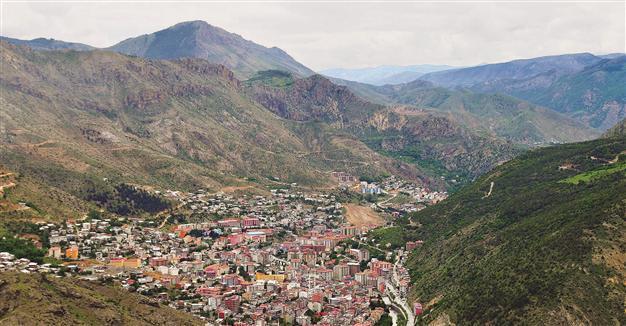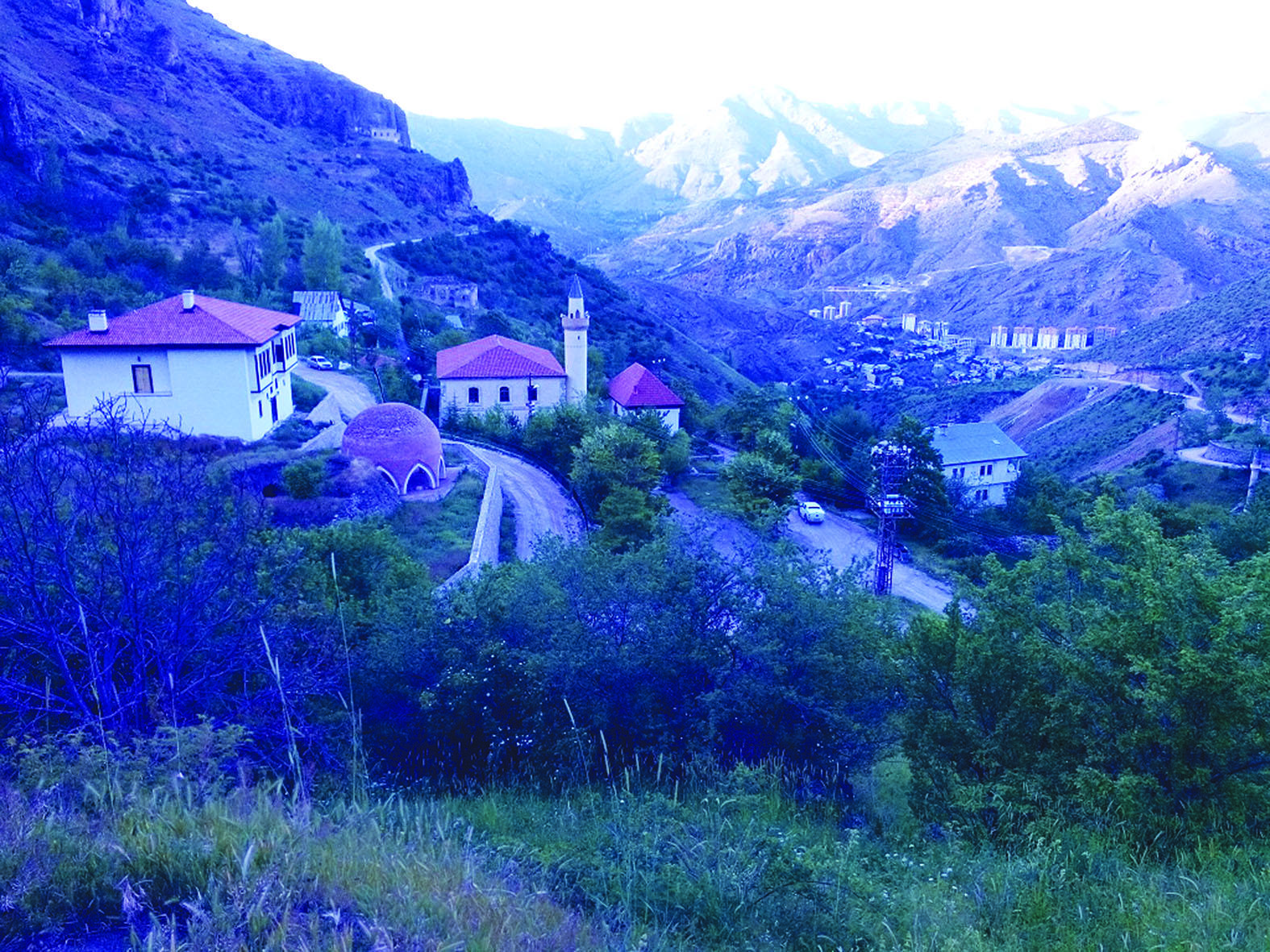Historical city in Gümüşhane facing landslide threat
Ömer Erbil

The historical Süleymaniye neighborhood, also known as old Gümüşhane, in the Black Sea region where Greeks, Armenians and Turks used to live together in the past is being threatened by a landslide which could wipe out its centuries-old artifacts, including mosques, baths, churches and an Ottoman bazaar. The area has already been damaged by one landslide caused by roadwork for the controversial Green Road project and environmentalists fear more damage.
The Süleymaniye neighborhood, which has rich tourism potential, was declared a natural and urban archaeological area in 2002. Dating back to 3,000 B.C. and known for its silver mines, it was a city where Armenians, Greeks and Turks lived together in the Ottoman era.
The city’s Armenians migrated before 1915 and the Greeks left the city with the population exchange in 1923. After 1950, Turkish families moved five kilometers away to Gümüşhane and the city was completely abandoned.
A reconstruction plan for the area was made in 2006 but the plan considered only the architectural structures on the ground, while the centuries-old city needed archaeological excavations.
A revised plan was implemented which included a ski center to be constructed in the historical city and a three-meter road, which was constructed in 1980, was to be extended to seven meters within the scope of the plan and combined with the controversial Green Road project, planned to connect highland areas in the Black Sea region. However, during the roadwork carried out by the Gümüşhane Provincial Special Administration, a section of the slope collapsed, resulting in a landslide, which damaged a number of registered historical structures. The walls of the Sağir Mescidi Mosque were damaged, while the Timios Stavros Church and Çaput Bath were barely saved from the landslide. There is a fear that as long as the road work continues, the entire neighborhood is at risk of further landslides.
The Hagios Stephanos Church, a bridge, shops, the Ulu Mosque (also known as Süleymaniye Mosque), its fountain, lodges, the Bagios lonnes Rock Church, the Hacı Tahir Efendi Tomb, the Hagios lonnes Church, the Greek Boys High School, the Cami-i Sağir Church, the Süleymaniye Bath, the Dere Bath, the Kavaklık Bath, the Paşa Bath, the Güzeller Neighborhood Fountain and Güzeller Neighborhood Mosque are among the historical and cultural artifacts in the area.
Environmentalists call to stop the project
Environmentalist associations have said they are against the extension of the road, while insisting they are not against turning the region into a tourism center or the establishment of a ski center. Trabzon Association for the Protection of Natural and Historical Values head Associate Prof. Coşkun Erüz said the old Gümüşhane would face the threat of further landslides if the road extension work continues.
He added they were not against a tourism center in the area but the reconstruction plan should be convenient for nature and history.
“Constructing a single-lane road is not a problem. Alternative routes may also be planned. The underground is full of archaeological artifacts. All these slopes were full of structures in the past. Roadwork should be urgently stopped. Otherwise, the topographic structure of the city, which we can see in old photos and registered historical artifacts, and its silhouette, will vanish completely. This project should be stopped urgently,” he said.
 The historical Süleymaniye neighborhood, also known as old Gümüşhane, in the Black Sea region where Greeks, Armenians and Turks used to live together in the past is being threatened by a landslide which could wipe out its centuries-old artifacts, including mosques, baths, churches and an Ottoman bazaar. The area has already been damaged by one landslide caused by roadwork for the controversial Green Road project and environmentalists fear more damage.
The historical Süleymaniye neighborhood, also known as old Gümüşhane, in the Black Sea region where Greeks, Armenians and Turks used to live together in the past is being threatened by a landslide which could wipe out its centuries-old artifacts, including mosques, baths, churches and an Ottoman bazaar. The area has already been damaged by one landslide caused by roadwork for the controversial Green Road project and environmentalists fear more damage. 
